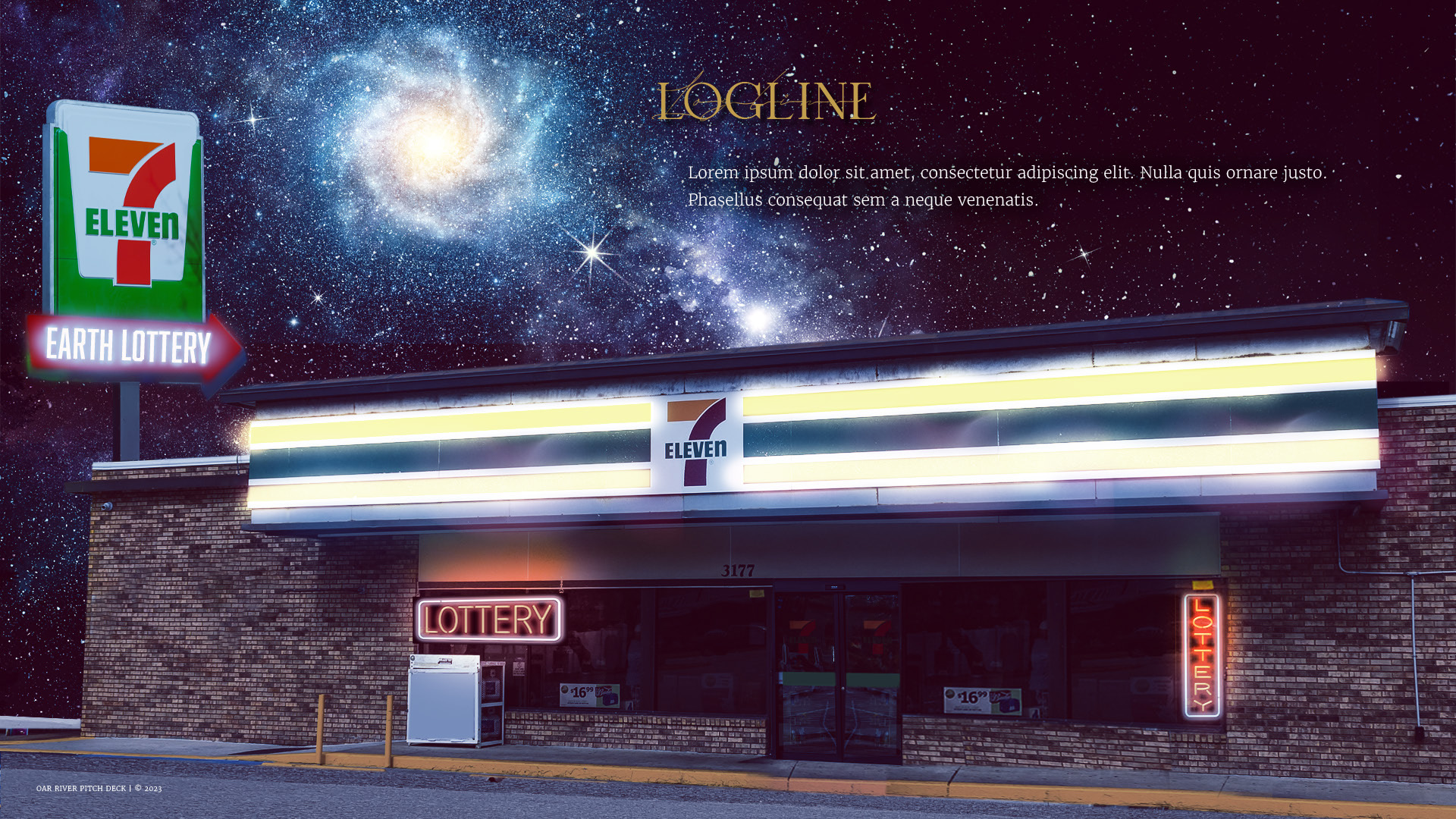In the competitive landscape of the Film and TV industry, where compelling stories are all vying attention and funding, a well-crafted pitch deck is more than just a presentation tool—it’s a key to building trust. Beyond showcasing your project, a pitch deck serves as a visual contract, a commitment to turning your vision into reality. In this article, I’ll explore what a crucial role its design plays in instilling confidence in investors, producers, and collaborators, making sure that your project stands out and secures the support it deserves.
1. An Immersive Experience
Your pitch deck shouldn’t just tell us about your project, it should feel like it too. Every page – right from the cover design to the final slide – should have a consistent style that evokes the theme, genre and narrative and takes the audience on a journey. This helps to create an emotional connection to the work and brings it to life in the mind of the viewer.

An example deck for a WWII themed TV series.

An examples of how the internal pages carry the theme through the whole deck.
2. Polish and Professionalism
The finer details in a pitch deck reflect a commitment to excellence and show that a project is well-organised and thought-out. This attention to detail should include high quality imagery, legible text that has been proofread and consistent visual elements that come together to create a cohesive design and sense of credibility. The design should also be responsive – meaning it can be viewed on various devices (mobile phones, laptops, tablets) and is automatically resized for that device.
3. Informative
The most powerful pitch decks will have been tailored to their audiences. Who are you pitching to? Is it a production company? A ‘name’ actor? A potential financial backer? All of these people require a slightly different approach to really appeal to them. Think about what information they might need and make sure it is well-researched, relevant and easy to digest.
4. Visual
Remember that Film and TV is a visual medium! As well as being easier to take in, visual stimuli is more likely to be remembered by a viewer than text. As tempting as it can be to include as much as possible, too much information can make the deck feel cluttered and unfocused. Instead, use your visual storytelling skills to engage hearts and minds with striking imagery, bold infographics and clear typography.

This deck for a fantasy film project has striking elements from the story scattered throughout.

Another example of how imagery can be used to tell the story.
5. Accessible
You may know your project inside and out – but for potential stakeholders, this may be their first encounter with your story. Show how it will appeal to audiences by making this pitch easy to access with clean layouts and uncomplicated text that will bring them straight to the heart of the story.

Example of a deck for a historical fantasy epic, with a clear sense of tone and prominent comparable films so at a glance it’s easy to see exactly what the project is about.
In Film and TV Land, where dreams are pitched as often as projects, a well-designed pitch deck is the bridge between imagination and reality. It is a testament to your project’s integrity, professionalism, and vision. Through careful design choices that communicate clearly and resonate emotionally, a pitch deck can become a powerful tool for building trust. And in the high-risk world of entertainment, trust is no small thing. It could be the winning strategy that turns your concept into a blockbuster.
For pitch deck and poster services for your latest TV or film project, drop me a line at adam@strelka.co.uk.


